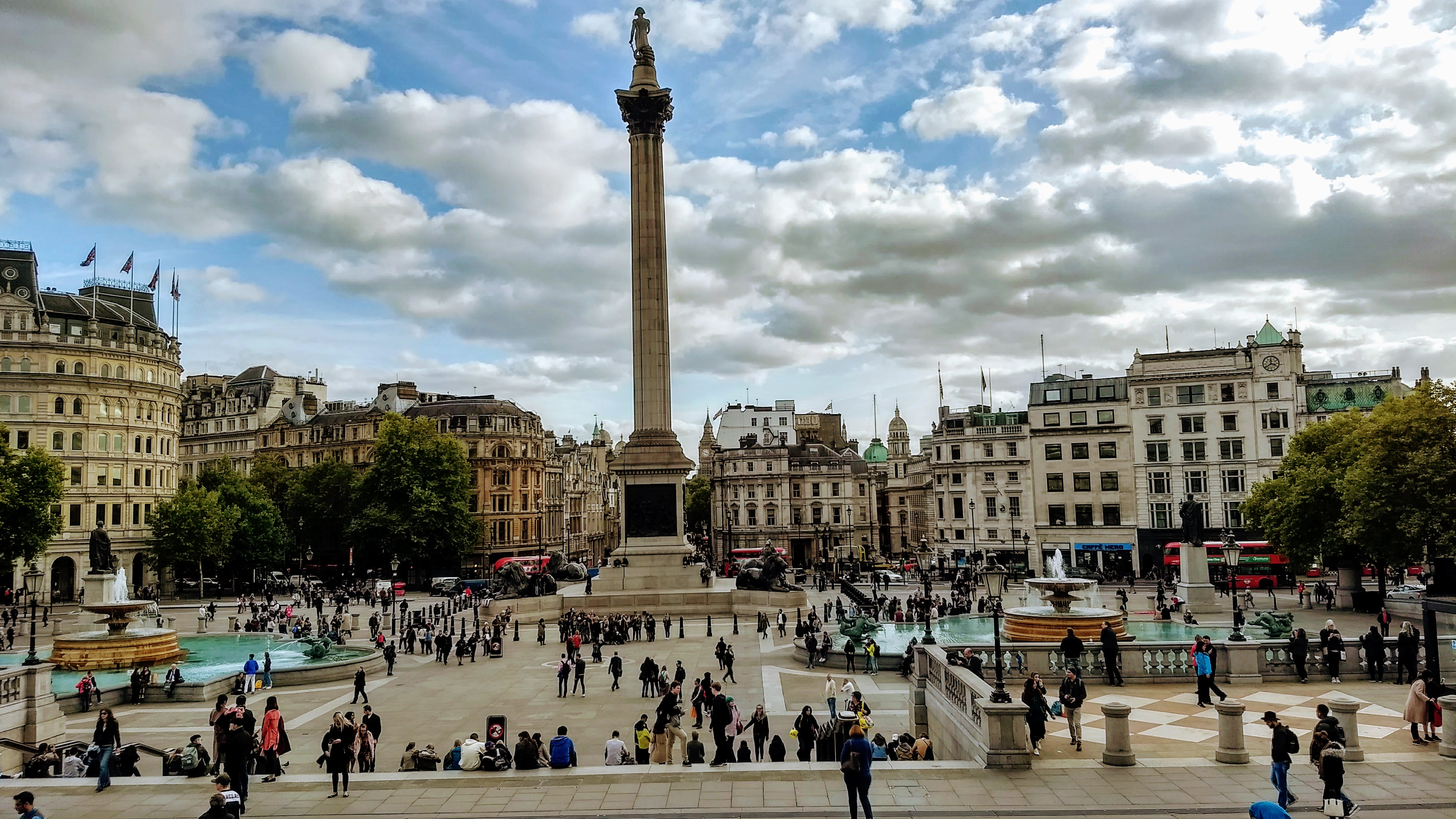Day: 24-29
Km travelled: 42.54 km
Steps: 65,900
September 30th – October 8th, 2017
(part 2 of the series on the wonderful British museums)
Have you ever looked at a painting and thought: “Really? It’s worth how much?” or even still “That’s art? It looks like a 5 year old’s drawing”. And let’s not forgot the classic “I bet I could do that”. I’ve certainly been guilty of uttering such thoughts out loud. A few years ago, I found myself staring at Monet’s famous ‘Water Lilies”, thinking “Huh? I don’t get how this is so famous!”, while others were enraptured by the painting. Feeling clueless, I decided even if I couldn’t appreciate art, I could at least understand it. I enrolled in an art appreciation course for adults through the local University and voila, 6 weeks later, not only did I start to understand art better, I actually started to like it! I was slowly getting myself ready for this adventure, knowing full well that I would have access to some of the world’s greatest masterpieces and I vowed to make the most of that opportunity.
As a newly established aesthete (bonus points to those who know the definition without resorting to Google!), I was highly anticipating this visit to The National Art Gallery. Located in Trafalgar Square, in the City of Westminster, this imposing gallery houses over 2 300 works and was established in 1824. With pieces ranging from the 13th century to the early 1900’s, everywhere is likely to find something that fills them with amazement. 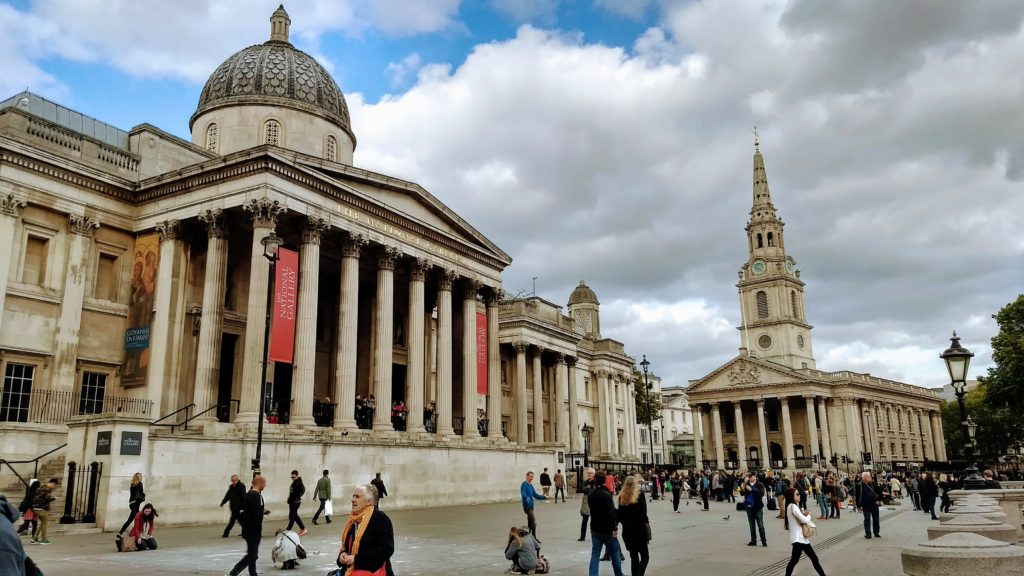
Art is subjective; two people will look at the same painting and have different reactions to it. Some appreciate the aesthetics; the thickness of the paint, the residual traces of the brush stroke, the choice of colours. Others might find that the painting’s history or meaning resonates with them most. For many, they simply like it or they don’t, without associating any deeper meaning. I certainly identify with all of the above and often find that my reaction and appreciation vary painting to painting. While a photo can never capture the essence of a painting, I’ve included a few of the ones that stood out to me the most.

The Fighting Temeraire (1839) – Joseph William Turner (left)
The Temeraire, a British ship known for its role in Nelson’s victory at the Battle of Trafalgar. Turner intention was not necessarily to commemorate the victory or a specific event, it was meant to evoke a sense of loss; the sun setting as the old ship sails away and welcoming the tugboat, the ‘ newer’ vessel. Ie. Out with the old, in with the new. And don’t worry, I didn’t come up with this on my own, I have the internet to thank for the symbolism revelation!
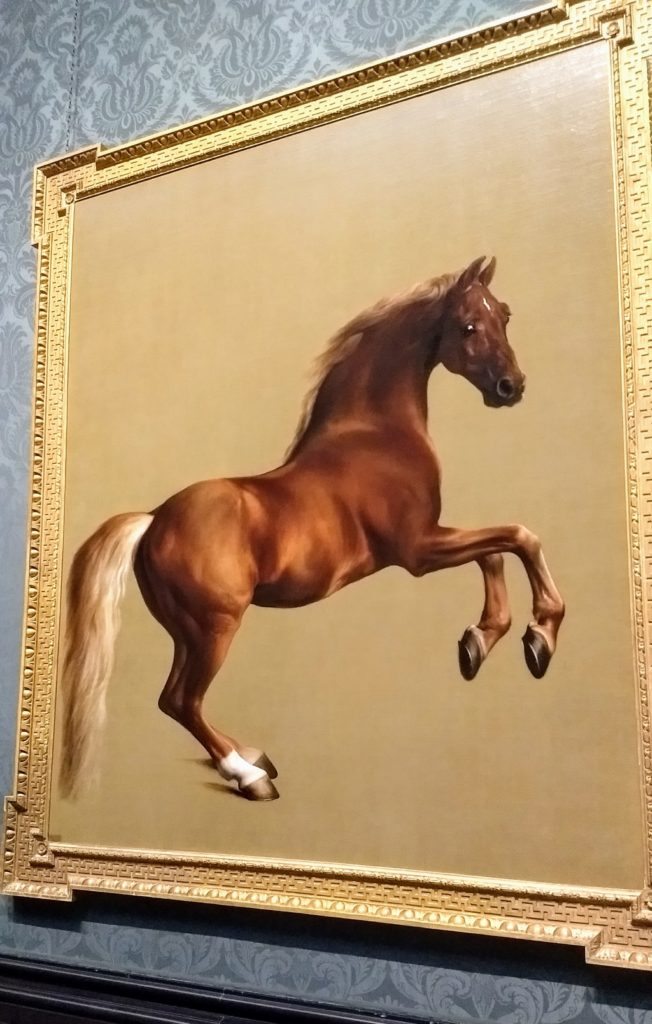
Whitejacket (1762) – George Stubbs (right)
This painting is massive! Blue ribbon for size alone. It measures almost 2.5m wide by 3m tall. Whitejacket was a prized racehorse at the time. The way that the artist painted the horse’s fur makes one want to reach out and touch it. It is incredibly realistic; one might mistake it for a photograph from a distance.
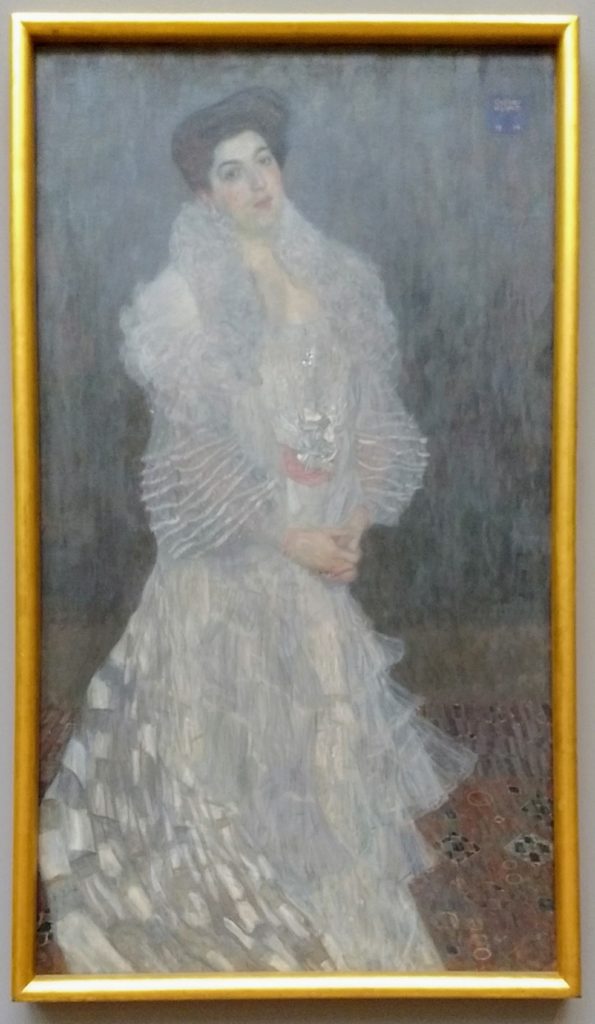
Portrait of Hermine Gallia (1904) – Gustav Klimt (left)
Klimt is most recognized for his ‘Golden Phase’ paintings such as The Kiss or Portrait of Adele Bloch-Bauer I which are adorned with gold-leaf and are striking. However this one struck me for the opposite reason; its lack of colour. It’s not often you see a painting all in white! And interesting fact, the dress in the painting was designed by the artist himself!
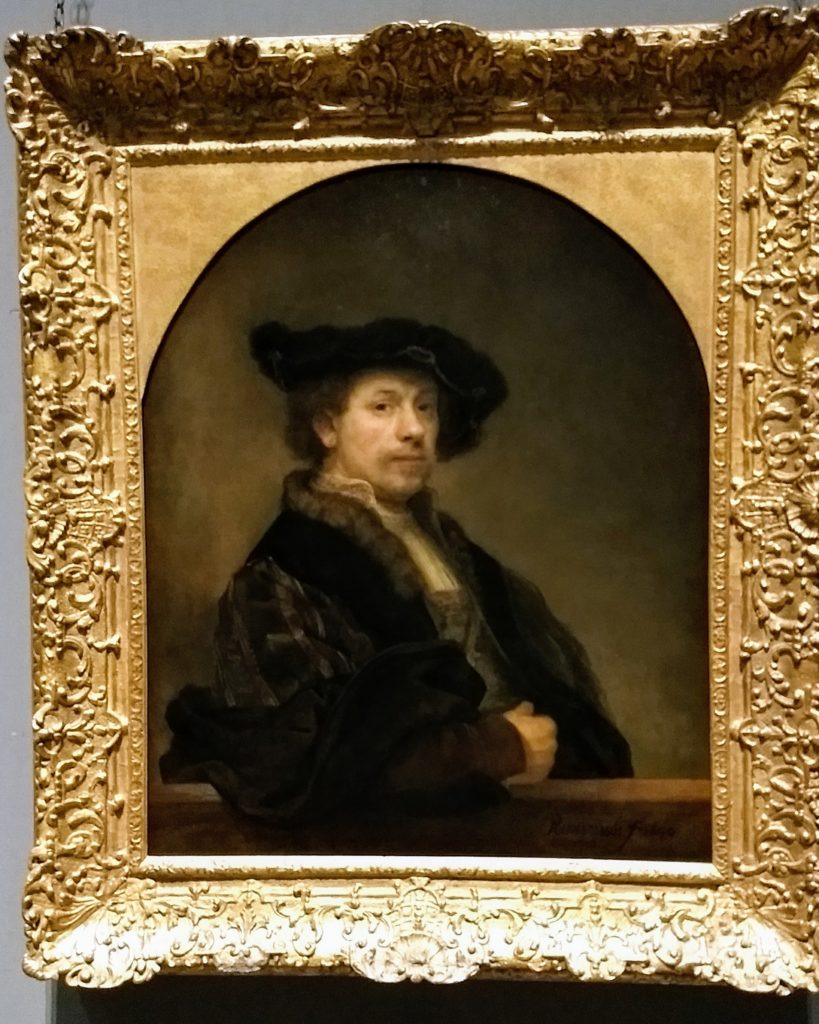
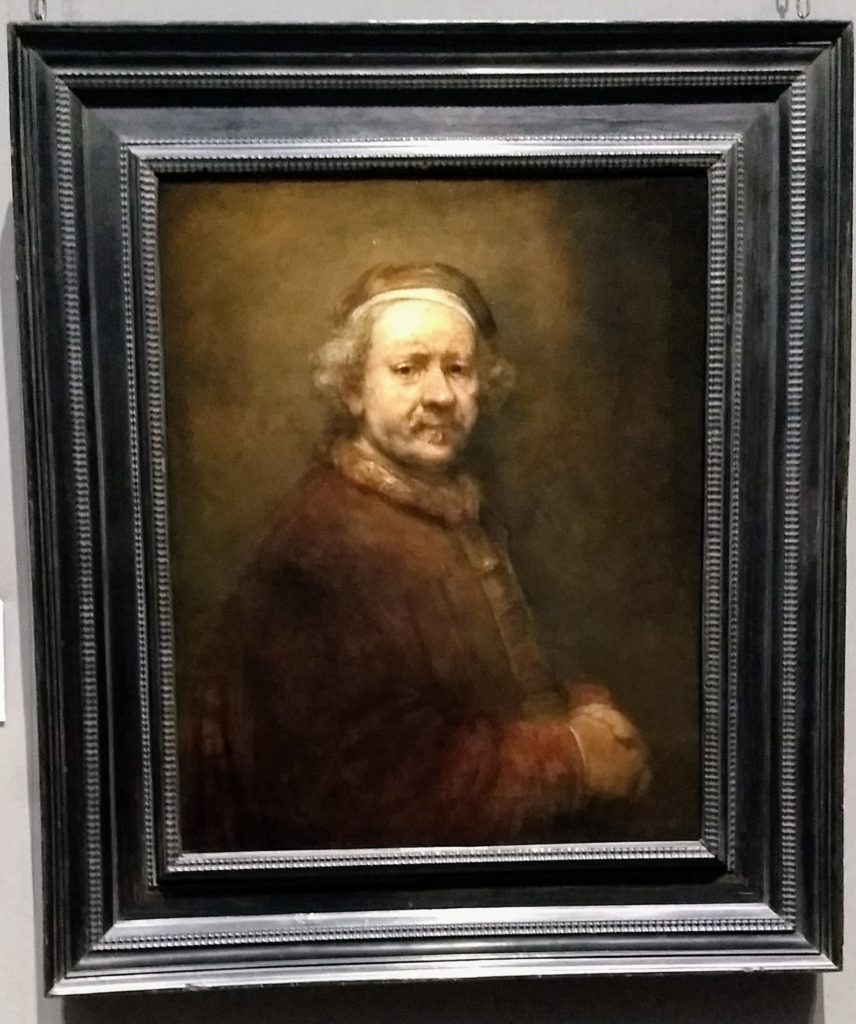
Self Portrait at the Age of 34 (left) & Self Portrait at the Age of 63 (right) – Rembrandt
I gravitated towards these two pieces because of the contrast they appear to represent. The Rembrandt on the left projects the self assuredness of someone at the height of his career, his gaze confident and determined. On the right, the artist’s gaze is steady, softer & reflective, as one tends to be near the end of their lives. Rembrandt painted more self portraits than any other artists. His self-portrait at 63-year-old was one of the final paintings he completed, finished in the last year of his life.
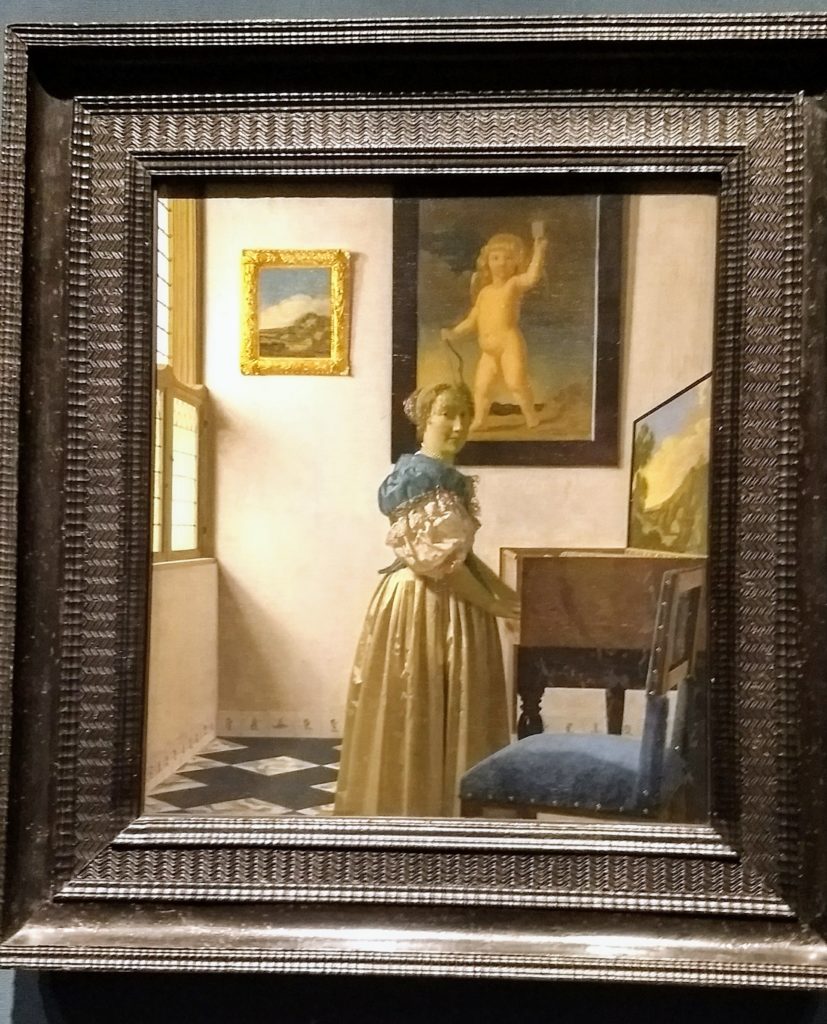
This piece struck me for a very simple reason: I had seen a very similar Vermeer painting hanging on the walls in the State Apartments of Buckingham Palace a few days before! Vermeer, like many other artists, often painted the same scene from different view points, which is why you will find a few more pieces featuring a young lady at a virginal (FYI: virginal = keyboard instrument of the harpsichord family)
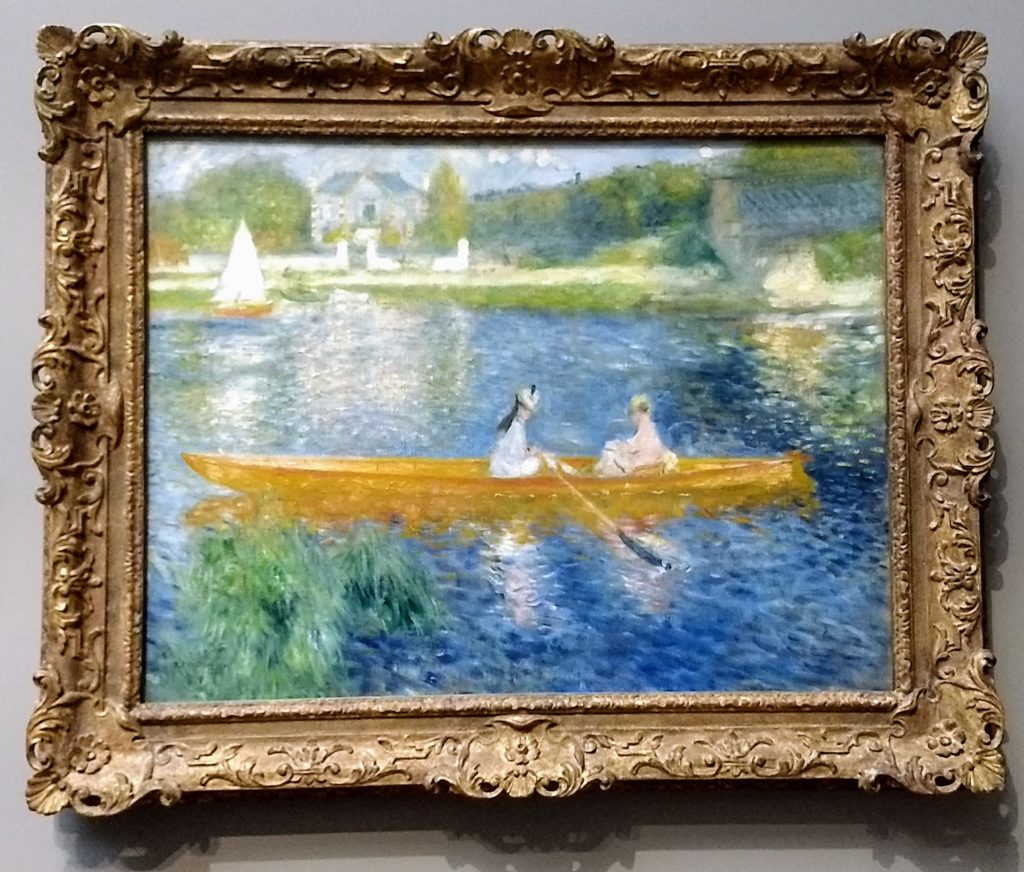
The Skiff (La Yole), Pierre-Auguste Renoir (left)
Renoir, one of the few impressionist I enjoy! (Monet, for all of his genius, still eludes me)The colours are vibrant & distinctive and their choice very smartly executed: as orange and blue are on the opposite sides of the colour wheel, their use in juxtaposition creates a striking effect.
 A Wheatfield, with Cypresses, Vincent van Gogh (above)
A Wheatfield, with Cypresses, Vincent van Gogh (above)
Ah, Vincent! One needs not to know art to know of van Gogh. Who has not heard of the infamous incident in which, in a fit of rage or perhaps psychosis, the artist severed part of his own ear. One of the most prolific painters of all time (over 2100 artworks in a decade!), he is quite easily one of the most famous and influential figures in the history of Western art. A Post-Impressionist, his works are characterized by the variety of techniques used to convey textures; by bold and often contrasting colours schemes and by his use of dramatic, expressive and occasionally impulsive brushstrokes. Unfortunately, plagued by mental illness his entire life, he committed suicide at the age of 37 and the world was thus robed of any more masterpieces. Interestingly enough, Vincent van Gogh was widely unpopular in his time, often considered a madman and a failure. He now ‘exists in the public imagination as the quintessential misunderstood genius, the artist “where discourses on madness and creativity converge’ (thanks Wikipedia!). One of my favourite van Gogh pieces, The Church in Auvers-sur-Oise, hangs in Paris’ Musée d’Orsay and its replica used to hand in my home (back when I had one!!). My second favourite van Gogh piece? Two Crabs! The colours are bold, vibrant and immediately draw the eye and the story behind the painting is also uniquely interesting. van Gogh, fresh out of an admission in a psychiatric hospital, chose to paint still life in order to ‘get back into painting’. How he chose crabs as his still life of choice when most paint bowls of fruit or even flowers I do not know, but I love that he did!
Two Crabs, Vincent van Gogh (below)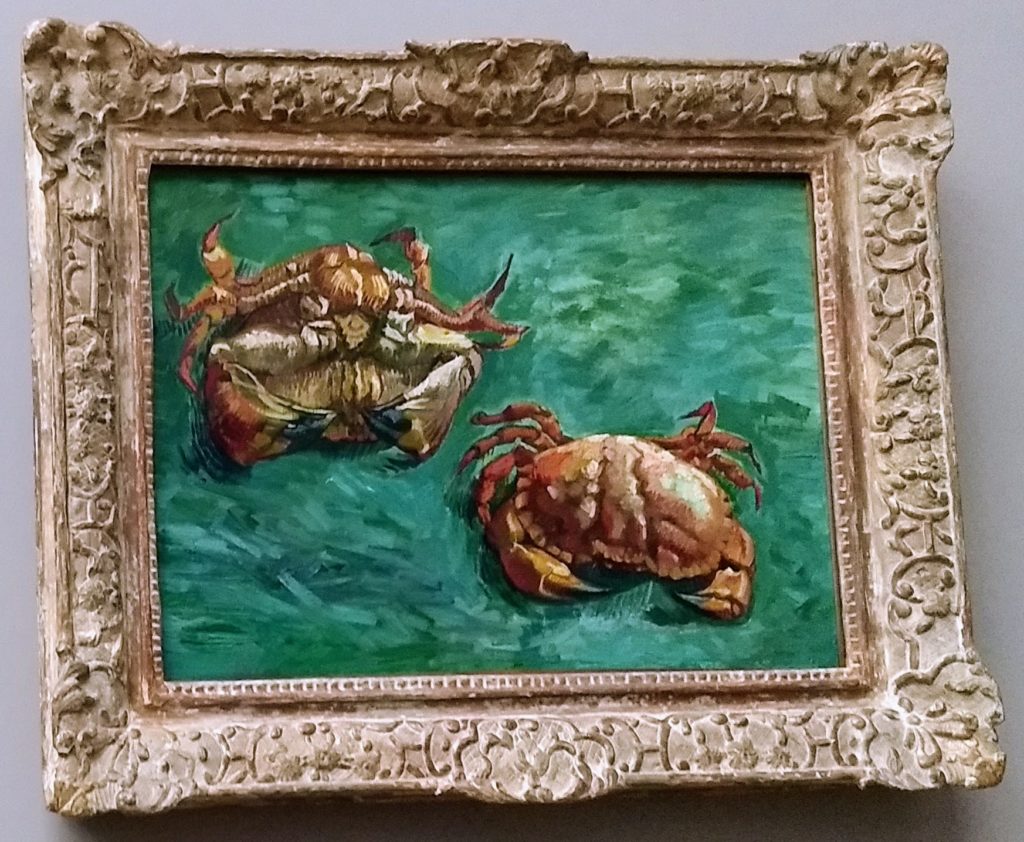
Over the course of the last few years, whether at home or while travelling, I’ve had the privilege to see firsthand works of some of the world’s most revered artists. However, 3 of these artists had eluded me: Raphael, Michelangelo and Leonardo Da Vinci. That is, up until today. To see these masters’ works in person was moving and even though these were not their most famous works, they were still exquisite! Words elude me to adequately describe the feelings elicited while gazing upon such beauty, such creativity and the photos do not do them justice, however I suppose it will have to do.
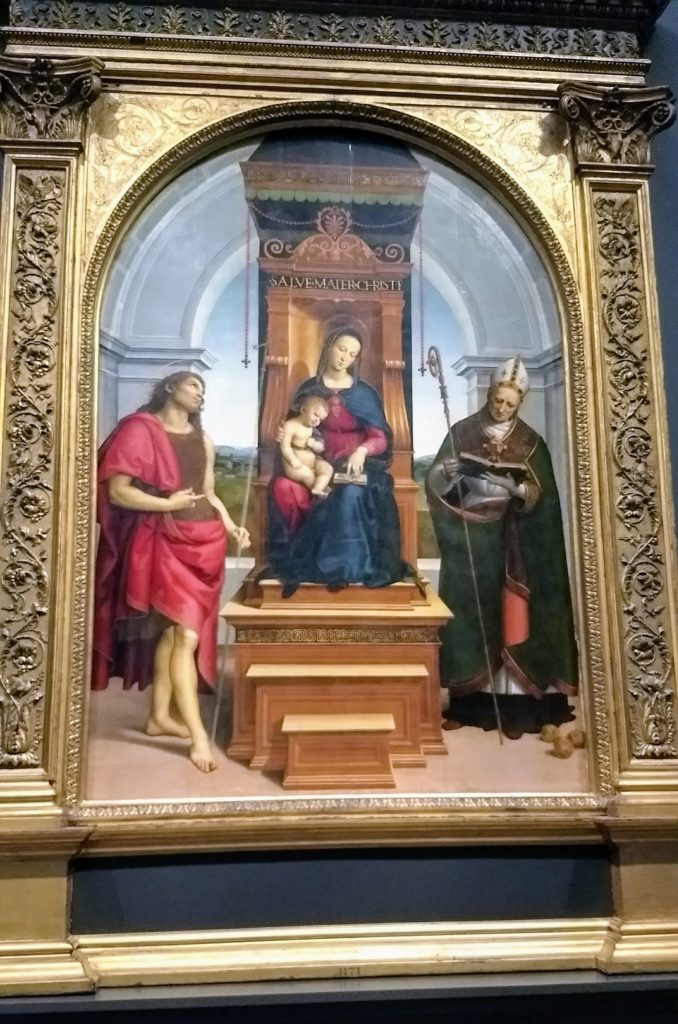
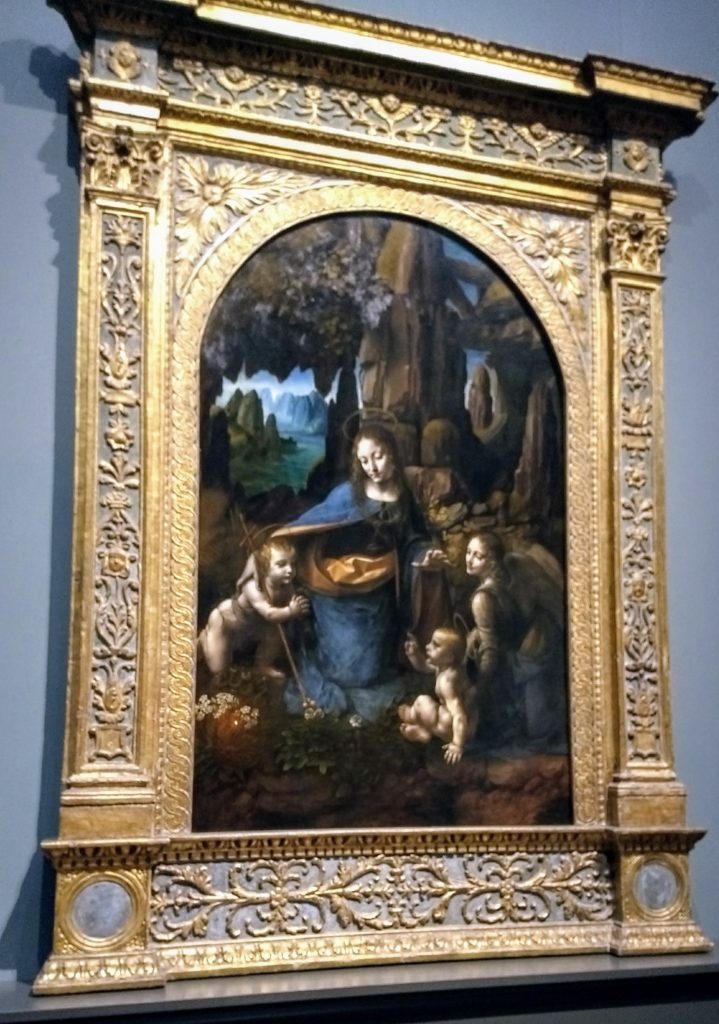
The Ansidei Madonna, Raphael (above, left) The Virgin of the Rocks, Leonardo da Vinci (above, right) (If it looks familiar, it’s likely because its counterpart, which resides in The Louvre, in Paris, was featured in the book and film ‘The Da Vinci Code’)
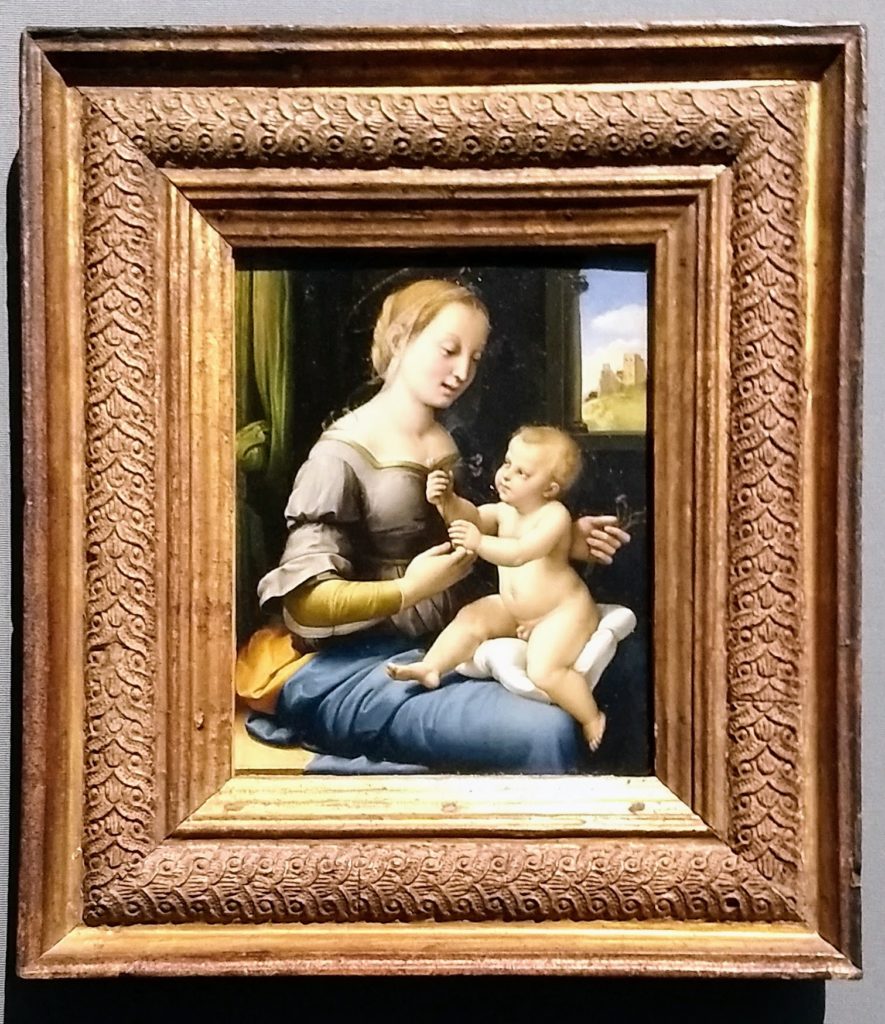
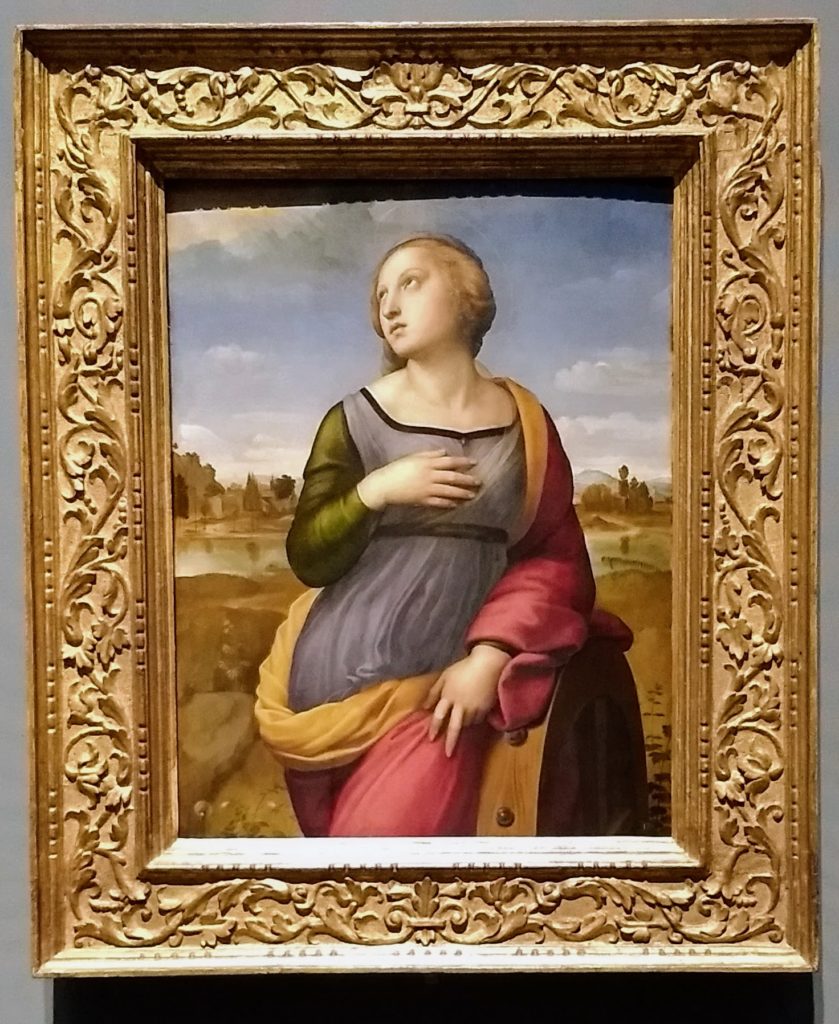
The Madonna of the Pinks, Raphael (above, left) Saint Catherine of Alexandria, Raphael (above, right)
‘The Manchester Madonna’, Michelangelo (below, left) The Entombment, Michelangelo (below, right)
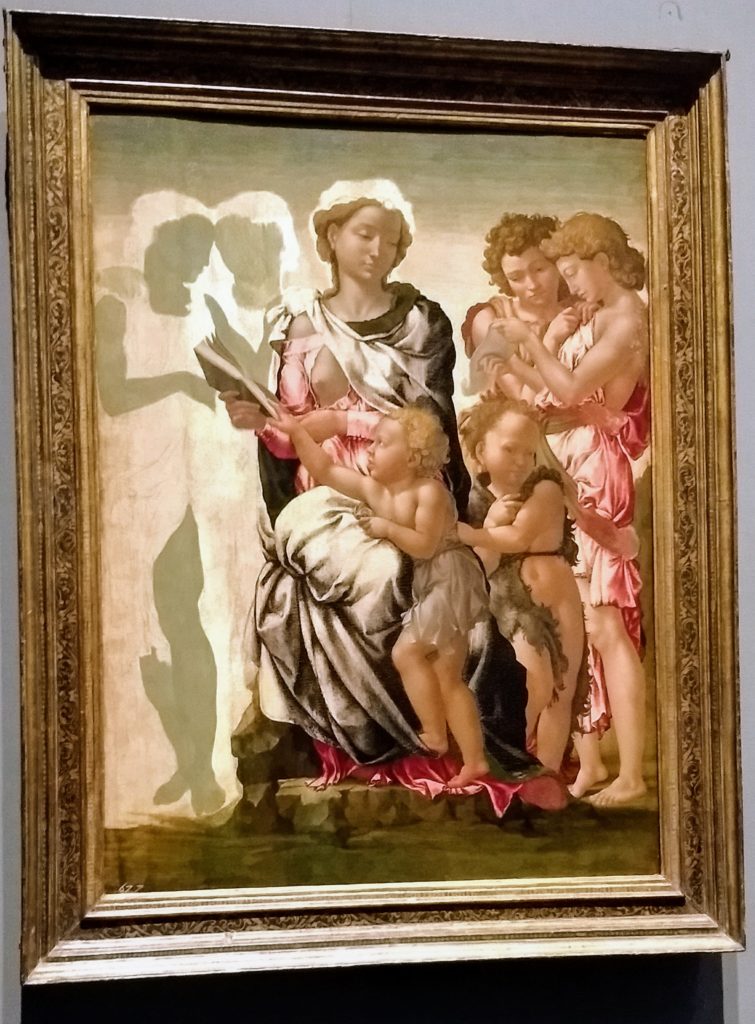
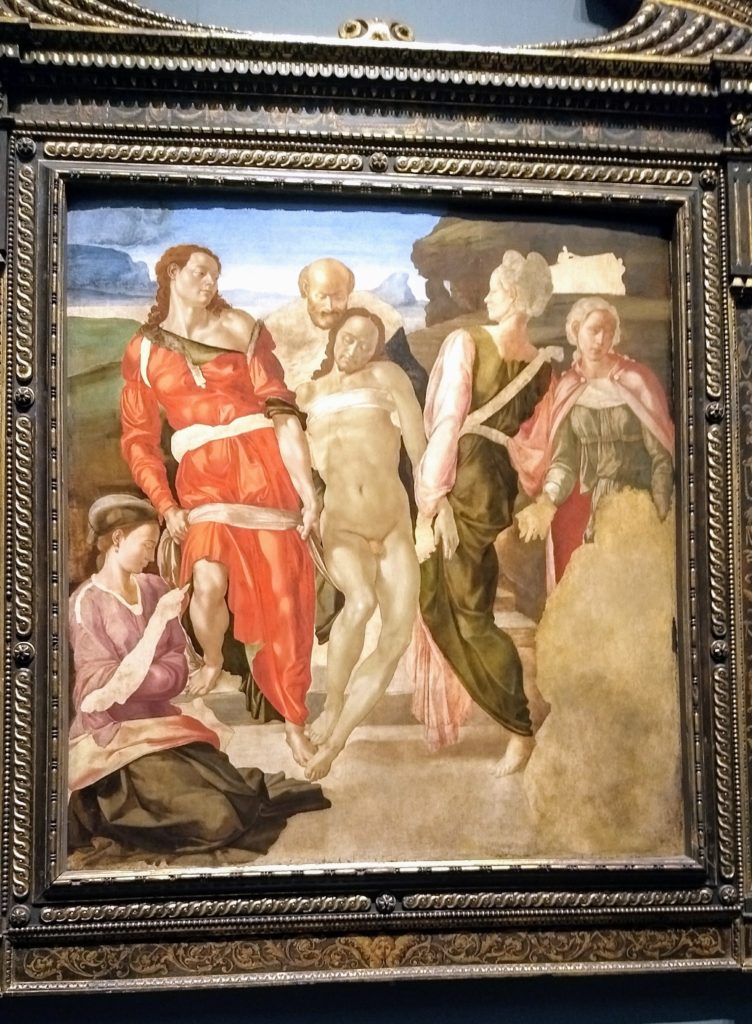
Michelangelo was known to leave many works unfinished, whether by choice or not.
I could go on with even more amazing artwork I saw that day, but don’t worry, I won’t!
As you can clearly see, I thoroughly enjoyed my day at The National Gallery.
It is said that you can lose yourself in art and indeed, I would have been quite happy to stay at the gallery all day!
I put my heart and my soul into my work and have lost my mind in the process – Vincent van Gogh
